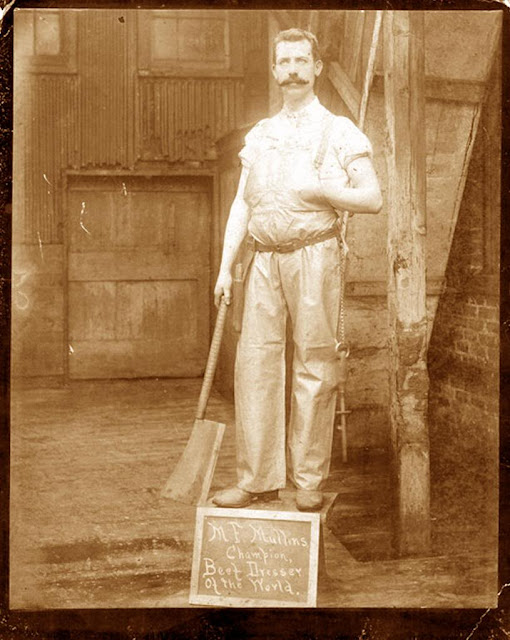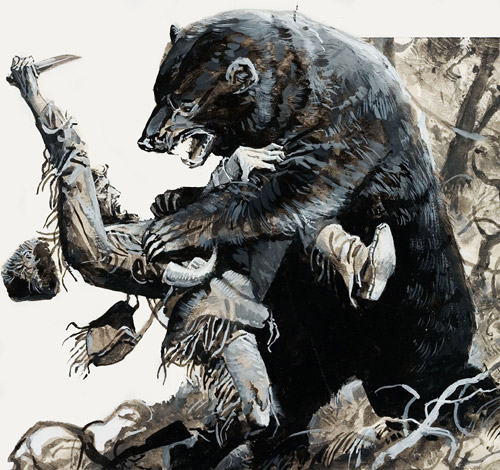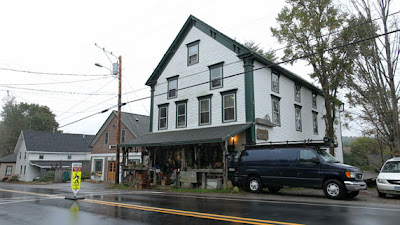An actual photo from 1823 of mild mannered frontiersman, Hugh Glass, dancing with his pet grizzly, Daisy.
Hugh Glass was a nobody from Pennsylvania who had a knack for trapping small furry animals and being tougher than everyone else. He is said to have been a sailor, pirate, Pawnee Indian, explorer, prisoner of war, bear wrestler, wilderness survival expert, master canoeist, fur trader, co-Yellowstone discoverer, and fellow ad responder to General William Ashley's campaign of one hundred men to "ascend the river Missouri".
Now the badassity begins. Hugh Glass was scouting an area alone near present day Perkins County, South Dakota when he surprised a mother grizzly and her cub. She charged and began to maul him till he was nearly dead. But Glass would have none of it. Despite his critical loss of blood (from gashes so deep his ribs were exposed) and broken leg, he managed to reach his trapper's knife and proceeded to deal her a series of punches and stabs, eventually killing the bear and leaving him pinned under the 400 pound animal. The company of men he was traveling with later found him in this condition, the leader of which ordered two men to stay behind, roll the bear off him, wait till he died, then bury the body. As they were digging his grave, the two men were attacked by Arikaree Indians, stole the crippled man's knife and rifle, and took flight. By this time Glass had lost consciousness, thus ultimately saving his life as the ambushing indians presumed him to be dead.
He eventually regained consciousness, RESET HIS BROKEN LEG, wrapped himself in a bear hide (I so want to say it was the hide of the bear he killed with his own hands, but this is unconfirmed), and began crawling. Two. Hundred. Miles. Along the way, he had to perform such unheard of survival feats including, laying on a rotten log so the maggots would eat away the bacteria that would lead to gangrene, fight off two wolves from a recently killed bison calf and eat the flesh, and SEWED a bear hide onto his back to cover his still healing wounds. Yeah.
Hugh glass would eventually recover from his incredible journey and track down the two men who left him to die, Bridger and Fitzgerald, planning on killing them. In the end, he spared both men for different reasons, Bridger because he was so young, and Fitzgerald because he was enlisted in the U.S. Army. Even after he had every reason to take his full revenge he showed the marks of an extraordinarily honorable man. Although, as you can see below, his appearance would suggest otherwise.
explore »


.JPG)
























